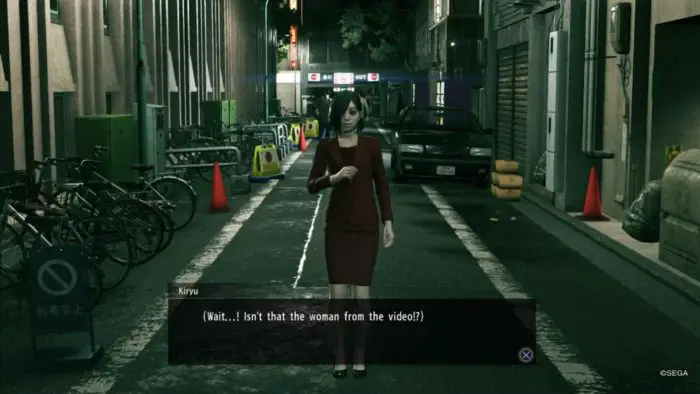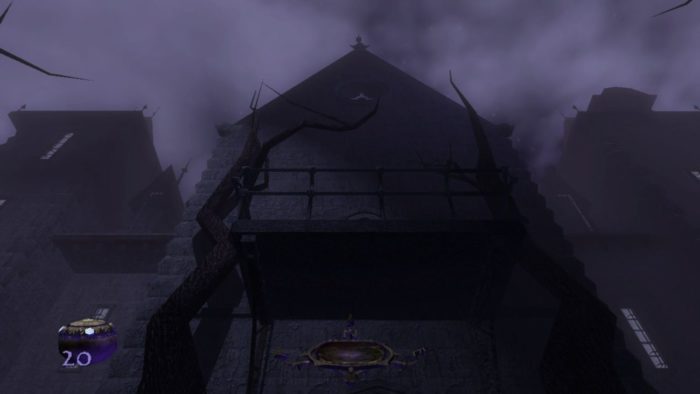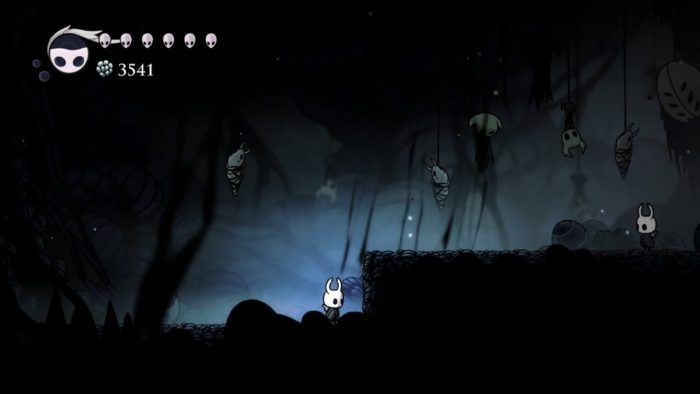Horror gaming is massively popular these days, but it’s always been a part of the industry. Developers have been sneaking in disturbing, upsetting, scary, and terrifying moments in otherwise non-horror titles for decades. These moments are all the more effective for how unexpected they are, and they’re a lot of fun to talk about. Let’s discuss five more instances of hidden horror in games, and here is the link to part one of this topic in case you missed it!
Pokemon Diamond/ Pearl/ Platinum—The Old Chateau

Pokemon is no stranger when it comes to surprising darkness in its games. Lavender Town gave an entire generation nightmares. Cubone wearing its mother’s skull still messes me up. The ghost girl in Lumiose City, coupled with the hidden messages graffitied in the back of a bunch of signs in that same city still manages to make my mind wander. But my favorite instance of surprising horror comes from the fourth generation of titles.
The Old Chateau is an entirely optional area near the beginning of the game that you need to use the HM Cut to access. It’s an old mansion in the middle of the woods, and what went down there and why it’s abandoned are mysteries that the player will solve once they decide to go inside. As it turns out, there was a fire that took the lives of the butler and a little girl who used to live there, and really the only thing for the player to do is catch Rotom, the ghost/electric pseudo legendary that haunts a TV in one of the rooms.
But there are lots of subtle details that really get under my skin. There are certain rooms that, when entered, might have an actual human ghost inside them. This is entirely left up to random chance, meaning that not every player might even know that they’re there. Not only that, but they don’t say a word or even acknowledge the player’s presence, and they don’t actually animate either. It’s supremely unnerving for such a colorful and family-friendly series to include such a dark side story.
But perhaps the creepiest thing of all is that this story doesn’t have any real resolution. Once you catch Rotom, the potential is still there to see the ghosts that haunt the place. It’s actually quite sad because to the best of my knowledge, there’s no way to help them “move on,” so to speak. It would be a bleak enough ghost story in anything else, but the fact that it’s in the colorful world of Pokemon just makes everything that much creepier.
Yakuza Kiwami 2—“Rising from the Shadows”

I absolutely love the Yakuza franchise, warts and all. Each game is similar to the last, but its specific mix of high-stakes drama and whacky side content, along with its unique approach to open world crime games means I don’t care that each entry is iterative rather than innovative. And a lot of the appeal is the aforementioned whacky side content—each game has a pretty large amount of side quests to complete. There’s an inordinate amount of effort put into these substories than you would see in most other video games.
Granted, not each substory is as good as the last, but the one I’m talking about here, “Rising from the Shadows,” is an excellent homage to Japanese horror. In the remake of the second game, protagonist Kazuma Kiryu can stumble across one of the many, many scams that plague his home city of Kamurocho. In this particular story, Kiryu is approached by a man and given a mysterious “dirty tape” and told to watch it. If you pursue this and hit up the local adult video store to watch it, you find out it’s not a pornographic tape at all. Instead, it’s a Ringu-esque cursed video, and the man who gave it to you now believes he’s safe from the woman in red who appears at a playground in the tape.
Is it original? Not by any means. It’s a very, very clear homage to J-horror from the ’90s, and basically a Ringu ripoff. As it turns out, the only way to avoid the curse is seemingly to pass it on to someone else, but this being Kamurocho, Kiryu is approached by someone claiming to be a medium. For 100,000 yen, the medium will cleanse the spirit. Only he’s scared off when the ghostly woman appears behind Kiryu.
It’s a lot of fun and gives some texture to the well-worn streets of Kamurocho. I live for weird little spooky stories like these in games, and the fact that there’s a lot left unsaid is great. It lets the mind wander just enough so that, despite the substory’s lack of originality, it still comes across as weird and creepy.
There’s a similarly brief but wonderful substory in Yakuza 5 where Shun Akiyama must chase down a photobombing ghost, only to find out that the man he pursues halfway across the city actually died a couple of years back. These kinds of substories don’t pop up very often in Yakuza, which makes their appearances that much more memorable.
The Thief series—Any haunted level

Thief is arguably the greatest stealth series in all of gaming (or, at least, the first two are), with their intense, slow-burn stealth mechanics, extremely well-designed levels, and surprisingly solid fantasy world-building. While it’s tough to say that the stories in the original games are works of art, they’re still a lot of fun, with just enough mythology given to the player that the world’s many clashing elements feel right at home with one another.
True to levels of the ’90s, where variety is the name of the game, there are several moments in the original trilogy where everything shifts gears and becomes a full-on horror title. In the first game, there are several forays into a barricaded part of the city that’s home to the Haunted Cathedral. Undead roam the streets in both zombie and ghost form, and the sound design for enemies like the Chains (sword-wielding ghosts of religious zealots) really sell this otherworldly vibe. The level where you final infiltrate said Haunted Cathedral and must make it back out alive is outstanding and basically feels like a proper survival horror game. Your resources are scarce, and the number of enemies far outweigh whatever you have in your arsenal. It’s white knuckle terror at its best.
The somewhat-maligned third game also has a standout haunted level in the form of the Shalebridge Cradle. What it lacks in the razor-sharp tension of the Haunted Cathedral it makes up for with pure atmospheric spookiness; you don’t even encounter any enemies until the second half of the level, but the benefit of better graphics than what the Dark Engine allowed for really lets the level get under your skin.
Paper Mario: The Thousand-Year Door—The Glitz Pit

The Thousand Year Door is an outstanding JRPG, and easily one of the best games on the Gamecube. A big reason for this is just how creative each story chapter is; while the overarching plot is pretty typical JRPG fare (collect a bunch of Crystal Stars to stop a big bad from doing something), it’s in the individual episodic chapters that the game really sells itself. It all takes place in the armpit of the Mushroom Kingdom, with the hub world featuring a noose dangling in its town square. It’s a bit darker than what fans are used to, and that darkness is put to great, creepy use in the game’s third chapter.
Mario and co. eventually have to travel to the Glitz Pit, a floating monument to decadence for decadence’s sake. On the surface, it most certainly lives up to its name. The colors are bright, the people are fancy, and the wrestling matches that make up the town’s centerpiece are truly sights to behold. Mario enters a tournament to win that area’s Crystal Star, which sits on the prize belt for the victor. Instead of being a straightforward tournament arc, you might find in any number of Shonen anime, Thousand Year Door instead uses this setup to explore a surprisingly grimy underbelly of the entertainment industry.
As it turns out, fighters have been going missing. Voices can be heard at night traveling through vents, everything is kept on lockdown at night, and there’s a mysterious benefactor contacting Mario to tell him about the many secrets of the Glitz Pit. Even though the game is rated E for everyone, this entire segment has a really uneasy, creepy, borderline sleazy feel to it. The Glitz Pit’s manager is just unsettling whenever he’s on-screen, lending a really uneasy air to everything going on.
It’s probably my favorite episode in the whole game. The charming paper aesthetic makes this underlying darkness really disarming and surprising, and even though it’s not really violent or anything like that, it still sticks in the memory for just how unexpected it all is.
Hollow Knight—The Deepnest

Hollow Knight is a pretty damn great Metroidvania title. Between its subdued but lovely soundtrack, outstanding boss fights, massive world map, gorgeous art style, and the knowledge that it was made by a handful of people, it’s impressive that the game packs in as much content as it does. My first playthrough took me 35 hours, and that’s not even getting the True Ending or completing all the free DLC challenge areas. It’s just an impressive achievement from top to bottom.
A big part of what kept me hooked was exploring the world. Unlike a lot of other games in the genre, Hollow Knight has players start at the top of the world and go deeper and deeper underground. Even though it’s all below the Earth, the areas are absolutely beautiful and filled with variety, and one of the standouts is the Deepnest. It’s on the left side of the map, and is mostly populated by spiders, centipedes, and a whole bunch of creepy bugs.
The lighting is also dim, the light not even reaching the corners of the screen. It gives the area a seriously claustrophobic feeling, but what really makes this area get under my skin is the enemies that lurk in the tunnels. As mentioned above, the general aesthetic of the Deepnest is that of some of the most disgusting bugs in existence, and the enemies reflect that. They come at you from out of nowhere, and move so quickly that you often barely have time to register what you’re looking at.
Plus, there’s some real body horror going on with them. It’s weird to say about a game whose characters are all bugs, but the enemies in the Deepnest are often creatures that play host to disgusting parasites. Sacs of egg will grow weird, twitchy limbs, and even though these aren’t humans, it’s no less disturbing to think about. There’s also an NPC that almost looks like No Face from Spirited Away; it’s a giant black insect with a disturbing mask that appears to be grinning. She will eventually try to eat the player if given the chance, and it’s just disturbing as all hell.
The whole area can best be described as oppressive, and the fact that there are almost no friendly faces in it just makes it that much worse. Like Dark Souls, Hollow Knight’s world is one of decay, of spoiled grandeur, and the Deepnest is one of the most far gone places you come across. It’s scary and tragic all at once.
These are just some of many instances of developers sneaking scary moments into their otherwise non-horror games. I’d love to hear about the ones I missed, as I’m sure there are a ton out there that have yet to be discovered.
Stay safe this Halloween friends!


